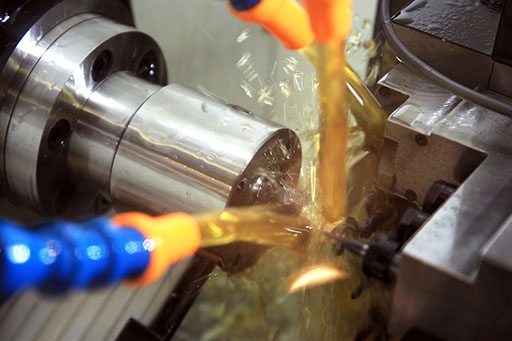Our machine outfit is continiously checked, modrnized and optimized. This is combined with more than 40 years of experience in the eep drilling technology of all metallic materials and innummerable workpieces.

As an independent business unit, deep drilling as commission work is an integral part of our service portfolio.
Our strength in precision deep drilling is the processing of specia drillings in various positios as well as the machining of numerous metallic materials. Thereby we have specialized in the deep drilling of components in small order quantities using the gun drilling method.
The longtime know-how of our drilling experts as well as an extensive machine outfit guarantee a dependable processing of your workpieces according to your individual requirements.
This way we are able to realize even complex individual orders and small batch orders in almost no time.
Generally, the whole range of internal contours that can be achieved by drilling is dominated by the deep drilling tehcnology. Merely smallest drilling depths are machined using other drilling methods.
The deep drilling technology differentiates between gun drilling, single-tube-system (BTA) and ejector-deep hole drilling which are utilized according to the specific requirements. For a drilling diameter of up to 40 mm the gun drilling procedure is typically used. It achieves the highest precision and quality of the drilling hole, i.e. straightness, circularity and surface.
In order to guarantee the highest precision possible some framework requirements must be fulfilled:
Our machine outfit is continiously checked, modrnized and optimized. This is combined with more than 40 years of experience in the eep drilling technology of all metallic materials and innummerable workpieces.
The position of drilling holes in the workpiece influences its course tremendously. The walls of the holes should be equal in relation to the outside edges of the workpiece, its grooves, other drilling holes etc. since the workpiece heats up during the drilling process. Irregular heat distribution then leads to different hardnesses. Consequently, the drill will always run towards warmer and therewith more malleable side.
Depending on the source material, nonuniformities in the distribution of hardness across the section can be the reason for a mismatch. Forged material and bar material is usually more malleable in the core, thick-walled pipes can show considerable differences in hardness. Cast material generally has an increase of alloying and sheet material can hold doubling that can also result in a mismatch.
For spot drilling the drill is passed through a drill bushing. Here, the drill bushing must completely rest against the workpiece in an orthogonal position. Therefore, grooves, recesses (also milled recesses) or threads that reuqire material bridgings should be inserted later.
Some specialties of the deep drilling technology must also be considered during the drilling process:
Cross holes increase the drilling effort since they must be filled with replacement material. The chips are transported with pressure oil on the outside of the drill (in a beading). If the drilling wall is intermittent, the chips get stuck in the hollow spaces which leads to tool breakage.
Counterboring leads to flow chips that can wrap around the drill and consequently leads to tool breakage.
Drilling through not fully penetration-welded attached weldments often leads to tool breakage.Since the drill cuts on one side, a conical oddment in the center of the workpiece remains unmachined, which leaves the drill stuck in combination with the chips.